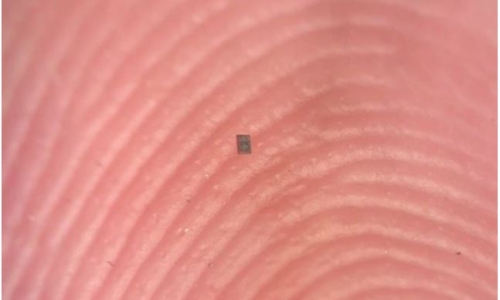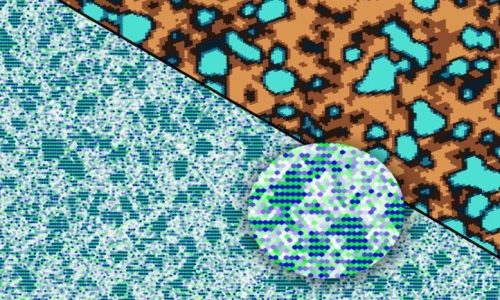


 6:3:15
6:3:15  2019-07-14
2019-07-14  1135
1135

All living beings have genes. They exist throughout the body. Genes are a set of instructions that determine what the organism is like, its appearance, how it survives, and how it behaves in its environment.
Genes are made of a substance called deoxyribonucleic acid, or DNA. They give instructions for a living being to make molecules called proteins.
A geneticist is a person who studies genes and how they can be targeted to improve aspects of life. Genetic engineering can provide a range of benefits for people, for example, increasing the productivity of food plants or preventing diseases in humans.
What are genes?
Genes are a section of DNA that are in charge of different functions like making proteins. Long strands of DNA with lots of genes make up chromosomes. DNA molecules are found in chromosomes. Chromosomes are located inside of the nucleus of cells.
Each chromosome is one long single molecule of DNA. This DNA contains important genetic information.
Chromosomes have a unique structure, which helps to keep the DNA tightly wrapped around the proteins called histones. If the DNA molecules were not bound by the histones, they would be too long to fit inside of the cell.
Genes vary in complexity. In humans, they range in size from a few hundred DNA bases to more than 2 million bases.
Different living things have different shapes and numbers of chromosomes. Humans have 23 pairs of chromosomes, or a total of 46. A donkey has 31 pairs of chromosomes, a hedgehog has 44, and a fruit fly has just 4.
DNA contains the biological instructions that make each species unique.
DNA is passed from adult organisms to their offspring during reproduction. The building blocks of DNA are called nucleotides. Nucleotides have three parts: A phosphate group, a sugar group and one of four types of nitrogen bases.
What are they made of?
A gene consists of a long combination of four different nucleotide bases, or chemicals. There are many possible combinations.
The four nucleotides are:
Different combinations of the letters ACGT give people different characteristics. For example, a person with the combination ATCGTT may have blue eyes, while somebody with the combination ATCGCT may have brown eyes.
To recap in more detail:
Genes carry the codes ACGT. Each person has thousands of genes. They are like a computer program, and they make the individual what they are.
A gene is a tiny section of a long DNA double helix molecule, which consists of a linear sequence of base pairs. A gene is any section along the DNA with instructions encoded that allow a cell to produce a specific product - usually a protein, such as an enzyme - that triggers one precise action.
DNA is the chemical that appears in strands. Every cell in a person's body has the same DNA, but each person's DNA is different. This is what makes each person unique.
DNA is made up of two long-paired strands spiraled into the famous double helix. Each strand contains millions of chemical building blocks called bases.
Function
Genes decide almost everything about a living being. One or more genes can affect a specific trait. Genes may interact with an individual's environment too and change what the gene makes.
Genes affect hundreds of internal and external factors, such as whether a person will get a particular color of eyes or what diseases they may develop.
Some diseases, such as sickle-cell anemia and Huntington's disease, are inherited, and these are also affected by genes.
Where do they come from?
A gene is a basic unit of heredity in a living organism. Genes come from our parents. We may inherit our physical traits and the likelihood of getting certain diseases and conditions from a parent.
Genes contain the data needed to build and maintain cells and pass genetic information to offspring.
Each cell contains two sets of chromosomes: One set comes from the mother and the other comes from the father. The male sperm and the female egg carry a single set of 23 chromosomes each, including 22 autosomes plus an X or Y sex chromosome.
A female inherits an X chromosome from each parent, but a male inherits an X chromosome from their mother and a Y chromosome from their father.
The Human Genome Project
The Human Genome Project (HGP) is a major scientific research project. It is the largest single research activity ever carried out in modern science.
It aims to determine the sequence of the chemical pairs that make up human DNA and to identify and map the 20,000 to 25,000 or so genes that make up the human genome.
The marks do not change the sequence of the DNA, but they do change the way cells use the DNA's instructions.
The marks can be passed on from cell to cell as they divide, and they can even be passed from one generation to the next.
Specialized cells can control many functions in the body. For example, specialized cells in red blood cells make proteins that carry oxygen from air to the rest of the body. The epigenome controls many of these changes within the genome.
The chemical tags on the DNA and histones can become rearranged as the specialized cells and the epigenome change throughout a person's lifetime.
Lifestyle and environmental factors such as smoking, diet and infectious diseases can bring about changes in the epigenome. They can expose a person to pressures that prompt chemical responses.
These responses can lead to direct changes in the epigenome, and some of these changes can be damaging. Some human diseases are due to malfunctions in the proteins that "read" and "write" epigenomic marks.
Some of these changes are linked to the development of disease.
Cancer can result from changes in the genome, the epigenome or both. Changes in the epigenome can switch on or off the genes that are involved in cell growth or the immune response. These changes can cause uncontrolled growth, a feature of cancer, or a failure of the immune system to destroy tumors.
Researchers in The Cancer Genome Atlas (TCGA) network are comparing the genomes and epigenomes of normal cells with those of cancer cells in the hope of compiling a current and complete list of possible epigenomic changes that can lead to cancer.
Researchers in epigenomics are focused on trying to chart the locations and understand the functions of all the chemical tags that mark the genome. This information may lead to a better understanding of the human body and knowledge of ways to improve human health.
Gene therapy
In gene therapy, genes are inserted into a patient's cells and tissues to treat a disease, usually a hereditary disease. Gene therapy uses sections of DNA to treat or prevent disease. This science is still in its early stages, but there has been some success.
For example, in 2016, scientists reported that they had managed to improve the eyesight of 3 adult patients with congenital blindness by using gene therapy.
In 2017, a reproductive endocrinologist, named John Zhang, and a team at the New Hope Fertility Center in New York used a technique called mitochondrial replacement therapy in a revolutionary way.
They announced the birth of a child to a mother carrying a fatal genetic defect. Researchers combined DNA from two women and one man to bypass the defect.
The result was a healthy baby boy with three genetic parents. This type of research is still in the early stages, and much is still unknown, but results look promising.
Scientists are looking at different ways of treating cancer using gene therapy. Experimental gene therapy may use patients' own blood cells to kills cancer cells. In one study, 82 percent of patients had their cancer shrink by at least half at some point during treatment.
Gene testing to predict cancer
Another use of genetic information is to help predict who is likely to develop a disease, for example, early-onset Alzheimer's disease and breast cancer.
Women with the BRCA1 gene have a significantly higher chance of developing breast cancer. A woman can have a test to find out whether she carries that gene. BRCA1 carriers have a 50 percent chance of passing the anomaly to each of their children.
Genetic tests for personalized therapy
Scientists say that one day we will be able to test a patient to find out which specific medicines are best for them, depending on their genetic makeup. Some medicines work well for some patients, but not for others. Gene therapy is still a growing science, but in time, it may become a viable medical treatment.
Reality Of Islam |
|

A tiny robo

By applying

Stanford, C

A new study
 9:3:43
9:3:43
 2018-11-05
2018-11-05
10 benefits of Marriage in Islam
 7:5:22
7:5:22
 2019-04-08
2019-04-08
benefits of reciting surat yunus, hud &
 9:45:7
9:45:7
 2018-12-24
2018-12-24
advantages & disadvantages of divorce
 11:35:12
11:35:12
 2018-06-10
2018-06-10
 6:0:51
6:0:51
 2018-10-16
2018-10-16
 11:34:48
11:34:48
 2022-06-29
2022-06-29
 8:15:37
8:15:37
 2023-02-16
2023-02-16
 7:59:14
7:59:14
 2018-06-21
2018-06-21
 7:6:7
7:6:7
 2022-03-21
2022-03-21
 7:26:19
7:26:19
 2022-04-08
2022-04-08
 8:21:9
8:21:9
 2018-06-21
2018-06-21
 2:5:14
2:5:14
 2023-01-28
2023-01-28
 5:41:46
5:41:46
 2023-03-18
2023-03-18
| LATEST |